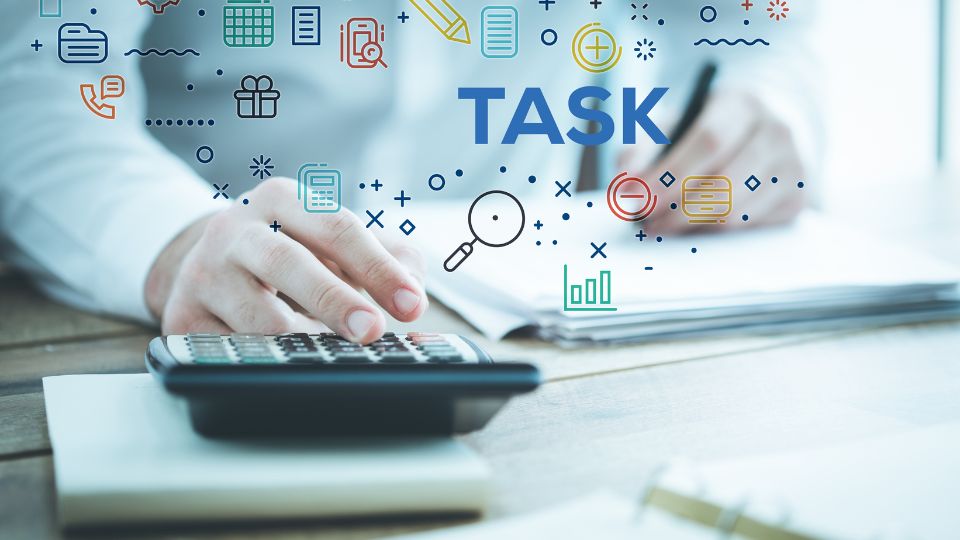What Is a Task chart?
In Project Management, visual tools are crucial in keeping teams aligned and projects on track. Among these tools, task charts are powerful allies for project managers and team members. Let's dive into what task charts are, their benefits, and how they can transform your project workflow.
A task chart, also known as a task management chart or project task chart, is a visual representation of project tasks, their durations, and their relationships. It provides a clear, graphical overview of what needs to be done, when, and by whom.
Types of Task Charts
1. Gantt Chart
- The most common type of task chart
- A horizontal bar chart showing tasks against a timeline
- Illustrates task dependencies and project milestones
2. Kanban Board
- A visual board with columns representing task stages
- Cards represent individual tasks moving through stages
- Ideal for visualizing workflow and identifying bottlenecks
3. PERT Chart
- Program Evaluation and Review Technique
- A network diagram showing task sequences and dependencies
- Useful for identifying critical paths in complex projects
4. Timeline Chart
- A simple linear representation of tasks over time
- Good for high-level project overviews
- Easy to understand for stakeholders
5. Work Breakdown Structure (WBS)
- A hierarchical decomposition of a project into smaller, manageable tasks
- Not time-based but shows task relationships and project scope
Key Components of a Task Chart
- Tasks: Individual work items or activities
- Duration: Estimated time for each task
- Start and End Dates: Planned timeframes for tasks
- Dependencies: Relationships between tasks
- Milestones: Significant points or events in the project
- Resources: Team members or assets assigned to tasks
Benefits of Using Task Charts
- Visual Clarity: Provide a clear, easy-to-understand overview of the project
- Improved Planning: Help in estimating timelines and resource needs
- Enhanced Communication: Facilitate better understanding among team members and stakeholders
- Progress Tracking: Allow for quick assessment of project status
- Resource Management: Aid in balancing workloads and identifying conflicts
- Flexibility: Can be easily updated as the project evolves
- Risk Identification: Help spot potential delays or issues early
Creating Effective Task Charts
- Define Clear Objectives: Understand project goals before creating the chart
- Break Down Tasks: Divide the project into manageable, specific tasks
- Estimate Accurately: Provide realistic time estimates for each task
- Identify Dependencies: Clearly mark relationships between tasks
- Assign Resources: Allocate team members or assets to each task
- Include Milestones: Mark significant project events or deadlines
- Keep It Updated: Regularly revise the chart as the project progresses
Challenges in Using Task Charts
- Overcomplication: Avoid including too much detail, which can clutter the chart
- Maintaining Accuracy: Ensure the chart is kept up-to-date with project changes
- Resource Conflicts: Be aware of overallocation of resources across tasks
- Rigidity: Don’t let the chart dictate the project; remain flexible to changes
- Software Limitations: Choose the right tool that fits your project needs
Vabro: Elevating Task Charts to New Heights
While traditional task charts offer valuable insights, Vabro takes this concept to the next level with our innovative, AI-powered approach to project visualization.
With Vabro, you get:
- Dynamic, interactive task charts that adapt in real-time to project changes
- AI-driven insights that predict potential bottlenecks and suggest optimizations
- Customizable views that cater to different team members' needs (e.g., developer view, manager view)
- Seamless integration with your existing project management tools
- Automated resource leveling to prevent overallocation and burnout
- Smart task dependency management that alerts you to potential conflicts
What sets Vabro apart is its intelligent chart generation. Our system doesn’t just display your tasks; it understands them. It analyzes your project data, team capacity, and historical performance to suggest the most efficient task arrangements and timelines.
Vabro’s task charts go beyond visualization – they’re interactive planning tools. Drag and drop tasks, and watch as our AI instantly recalculates dependencies, updates timelines, and highlights potential impacts on your project schedule.
